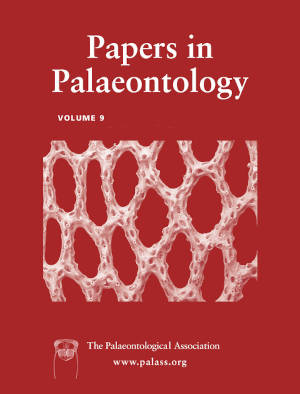Article: Burrows provided shelter for tetrapods in a Permo-Triassic desert
Publication: Papers in Palaeontology
Volume:
9
Part:
2
Publication Date:
2023
Article number:
e1490
Author(s):
Heitor Francischini, Paula Dentzien-Dias, Francesco Battista, Gabriel S. Sipp, Tomaz P. Melo, Claiton M. S. Scherer, and Cesar L. Schultz
DOI:
10.1002/spp2.1490
Abstract
Abstract We describe for the first time the presence of straight, curved and quasi-helical burrows preserved in plan, oblique and transversal views in the aeolian strata of the Permo-Triassic Buena Vista Formation (Paraná Basin), Rio Grande do Sul, southern Brazil. The morphology of the burrows is similar to that of others found in Guadalupian to Early Triassic-aged deposits in several parts of the world. Of these, middle Permian dicynodont-bearing helical burrows (Daimonelix) and Early–Middle Triassic kidney-shaped burrows (Reniformichnus), both from the Karoo Basin of South Africa, show a remarkable similarity to the Brazilian burrows, prompting a discussion of the probable producers. Dicynodonts, cynodonts, therocephalian and/or procolophonians are among the probable producers of such burrows, based on size compatibility between the burrows and estimates of body size for the fossil taxa, along with the presence of skeletal adaptations in Permo-Triassic tetrapods for digging (bone micro- and macrostructure). Last, we discuss some behavioural aspects of the producer of the burrows, mainly due to the presence of passive filling and bilobate bottoms in the tunnels, which indicates that they remained open as long as they were occupied. The burrows were excavated in a dry aeolian system that occurred in the Guadalupian–Induan interval of Brazil, representing the oldest unambiguous record of tetrapod dwelling structures in such an environment, and providing new and unprecedented information regarding the colonization of deserts by tetrapods during the end-Permian biotic crisis.
